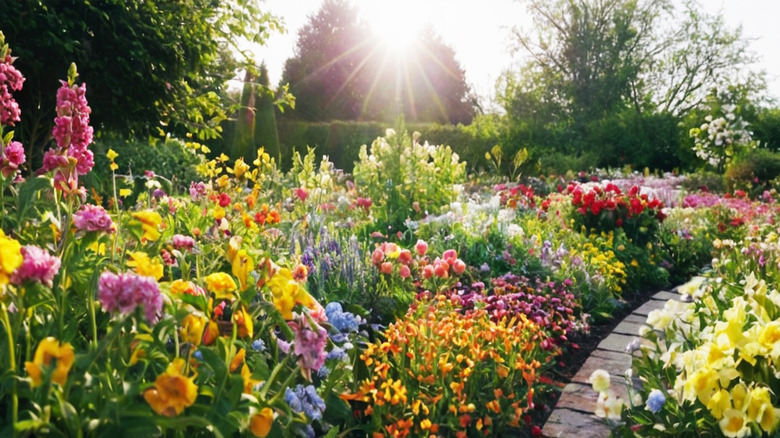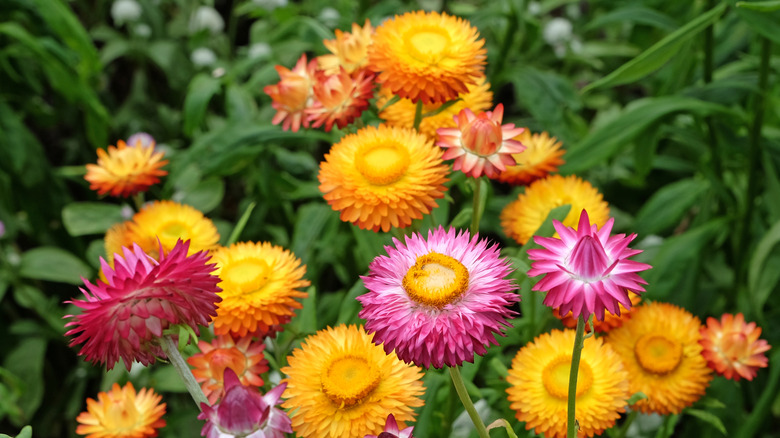The Self-Seeding Flower That'll Keep Your Garden Bursting With Color Into Fall
Bringing self-seeding flowers into your garden is a fantastic, low-effort way to enjoy color and life throughout the seasons. If you dream of creating the perfect cottage garden with wildflowers, butterflies, and bees, these flowers are a great way to achieve this. But, self-seeding plants don't just look great! They are also beneficial for the sustainability of your garden. As they re-seed over the years, natural selection occurs, making the plants hardier and more adaptable to your garden environment. One such bright and colorful self-seeder is the strawflower (Xerochrysum bracteatum). With its bold daisy-like blooms and delightful hues, this self-seeding flower can bring joy and warmth to your yard year after year. Blooming from early summer to the first frost, strawflowers are there to keep up the good vibes even when other plants have long since lost their petals.
These beautiful plants are native to Australia and flourish in full sun or partial shade. Thriving in USDA Hardiness Zones 8 to 10, strawflowers bloom in shades of pink, orange, white, yellow, and red, depending on the cultivar you choose. Most varieties of strawflowers grow to around 2 or 3 feet tall, but certain cultivars can reach up to 5 feet.
How to grow self-seeding strawflowers for color from summer to fall
Ready to bring these gorgeous flowers into your garden? Annual strawflowers can be purchased as seeds and should be started off indoors 6 to 8 weeks before the last frost. Place the seeds in individual containers filled with a commercial seed starting mix. Strawflower seeds need light to germinate, so don't cover them. Once the seedlings are at least 1 inch tall, and there's no threat of frost, it's time to harden them off before planting in your garden. This saves your seedlings from transplant shock, so take your time to slowly expose them to the outdoors over a two week period.
Plant your seedlings in a sunny spot with well-drained soil. Once they're happily growing, you can give them some slow-release fertilizer. These plants will do well if you water them only when the soil is dry. After a while, you'll start seeing wonderful, bright blooms in your garden!
To help your strawflowers self-seed, it's essential to hold back on the deadheading later on in the season. The seed heads should go brown and split open, releasing their seeds. Once this has occurred, gently shake the heads over the soil. You may also wish to gather some seeds to propagate later. During the following spring, keep an eye on the seedlings that crop up in your garden. You don't want to remove any strawflowers, thinking that they are weeds. If there are more seedlings than space in your garden, you can easily thin them out. Do this gently to avoid disrupting the other self-seeders that surround them.

